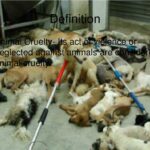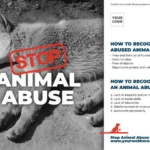Animal cruelty is a pernicious issue that lurks in the hidden corners of our communities, like a shadow that obscures the light of empathy and compassion. In Oneida County, this shadow extends over the lives of countless animals, ensnaring them in a web of neglect, abandonment, and maltreatment. As conscientious citizens, it is our duty to shed light on these injustices and offer our voices as advocates for the voiceless.
Understanding animal cruelty is akin to deciphering a complex tapestry woven with threads of sorrow and neglect. The term encompasses a variety of abhorrent behaviors, including physical abuse, emotional trauma, and the failure to provide essential care for pets and wildlife alike. It manifests in numerous forms: a starving dog left tethered to a post without food or water, a cat abandoned in an empty house, or a farm animal crammed into appallingly substandard living conditions. Each case is a unique narrative, evoking a profound sense of urgency for intervention.
So, how do we, as responsible members of our community, respond to such heart-wrenching scenarios? The process of reporting animal cruelty involves a combination of vigilance and decisive action. Recognizing the signs of distress in animals is the first step in this crucial journey. Some indicators of abuse include obvious physical injuries, malnutrition, lack of shelter, and abnormal behavior. When you witness these harbingers of suffering, it is imperative to take action.
In Oneida County, the first line of defense against animal cruelty begins with local law enforcement agencies. The Oneida County Sheriff’s Office has a dedicated Animal Control unit that serves as a bastion of hope for distressed animals. To report suspected cruelty, you can contact the office directly or visit their website for guidance. The process typically involves filing a detailed report that includes your observations, the specifics of the situation, and any photographic evidence, if available.
But simply dialing a phone number is not enough; it is crucial to document the scene meticulously, much like a journalist covering an iniquity. Take notes about what you have observed—dates, times, and the conditions in which the animals are kept. This information not only bolsters your claim but also serves to create a comprehensive picture of the abuse, akin to putting together a jigsaw puzzle that reveals the broader landscape of cruelty.
In addition to law enforcement, numerous animal welfare organizations stand ready to assist in the fight against cruelty. The Humane Society of the United States and local rescue groups are notable allies in this endeavor. These organizations not only provide resources for reporting instances of abuse but also facilitate the rescue and rehabilitation of affected animals. They often rely on community involvement and donations, making it even more paramount for us to lend our support.
Yet, the fight does not end when a report is filed. It is essential to become a proactive advocate for animal welfare. Volunteering at local shelters or participating in community awareness campaigns can uplift the plight of animals while fostering a culture of compassion. Education serves as a powerful weapon against ignorance, and simple outreach efforts can elevate community consciousness concerning the importance of responsible pet ownership and animal care.
For every story of despair, there is a corresponding narrative of hope. As reported not long ago, Cooper the dog, along with 60 other animals, found themselves on the precipice of rescue—a testament to the dedicated efforts of animal advocates and welfare organizations. These success stories remind us that compassion acts as the antidote to cruelty, rekindling our commitment to speak up for those unable to voice their suffering.
As we embark on this collective journey towards reform, it is crucial to remember that change often begins with education. Schools, community centers, and local libraries can serve as platforms for creating programs that educate the public about the importance of empathy towards animals. Workshops and seminars can disseminate critical information, fostering a culture of awareness and responsible behavior. Just as we cultivate our own growth through knowledge, progress in animal welfare hinges upon the enlightenment of our community.
Moreover, legislation plays an indispensable role in advancing animal rights. Residents can advocate for more robust laws and policies that protect animals from cruelty. Engaging with local representatives, attending town hall meetings, and forming coalitions with like-minded individuals can amplify our voice and influence. Grassroots movements have been successful in enacting change across the nation; Oneida County too can be a bastion for compassion, provided we rally together to forge a brighter future for its most vulnerable inhabitants.
In conclusion, the plight of animals in Oneida County reflects a broader societal malaise that requires urgent attention and dedicated action. By understanding how to identify, report, and respond to instances of cruelty, we become champions of change. The shadows of animal suffering can only be dispelled by education, community action, and unwavering advocacy. Let us illuminate the path forward, ensuring that no animal falls prey to cruelty unnoticed, and instead finds solace in the arms of compassionate caretakers.









